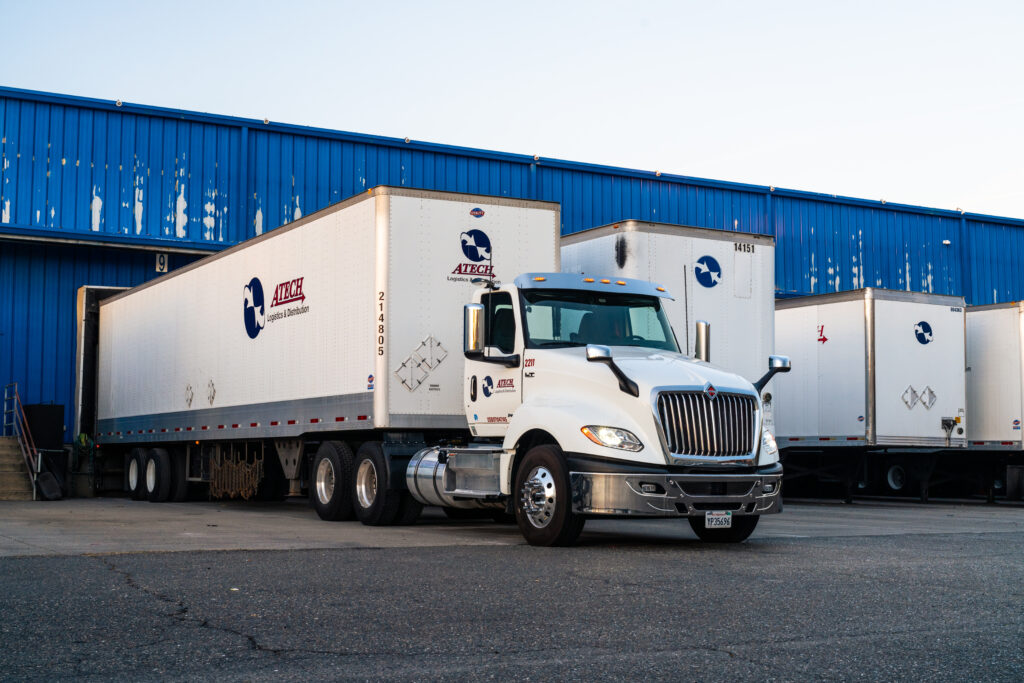
Efficiency is key in the fast-paced world of logistics and supply chain management. One key strategy that has gained significant traction in recent years is cross-docking.
What is cross-docking?
Cross docking is the process of unloading freight from an inbound truck and loading it directly onto an outbound truck. The freight does not require storage in between. Instead of stocking the products, they stay in movement and go directly to the next step and keep on moving, saving time and valuable real estate storage.
While cross-docking might seem simple on the outside and offers numerous benefits such as reduced inventory holding costs, shorter lead times, and improved customer satisfaction, it requires a lot of organization to successfully see its full potential.
Here are 9 steps to enhance your cross-docking operations:
Optimize Facility Layout and Design
Design the cross-docking facility layout that makes the most sense for you and your needs to minimize travel time and streamline material flow. Cross dock platforms are usually constructed in the shape of the letters “I”, “L”, “T” and other customized shapes. The size of the LTL or retail operation will determine the best shape for the operation. An “I” shape is most efficient for cross docks operating 150 doors or less. A “T” shape is best for operations of 150-200 doors and an “X” shape is best for operations of 200 doors or more.
Be Strategic with Spacing
Space is key in cross docking, despite the size of the operation. At any given time in the process, at least two trailers will be present for every shipment. It is important to organize the dock areas for efficient loading and unloading operations, segregate inbound and outbound traffic, and allocate adequate space for sorting and staging areas.
Move Efficiently
Moving products from one truck to the other is key in the process of cross-docking. Do not rely on moving shipments by hand. Not only is it less time efficient, but it also puts the safety of the shipments at risk of being damaged. Embracing automation technologies such as conveyor systems, robotic arms, and automated guided vehicles (AGVs) can help expedite material handling processes in the transition. Gravity rollers and other moveable conveyors don’t take up too much space and provide efficiency in the process by making it more timely and safer.
Automation reduces reliance on manual labor, enhances accuracy, and increases throughput rates.
Adopt Management Systems
Between unloading one truck, transitioning the products through the warehouse, and loading the other, there are many moving parts in cross-docking operations. Even the slightest mistake in one part of the process can drastically affect the whole operation, cause delays, or put the products in danger. Using a management system can help avoid any issues and streamline efficiency through the process.
A Transportation Management System (TMS) or a Warehouse Management System (WMS) can provide oversight and metrics to help stay organized and amplify efficiency across your cross-docking process.
An advanced tracking and tracing system can also help monitor the movement of goods in real-time throughout the cross-docking process. Enhanced visibility enables proactive decision-making, facilitates timely interventions, and improves overall supply chain transparency.
Streamline Communication and Collaboration
Effective communication and collaboration among all stakeholders, including suppliers, carriers, warehouse staff, and customers, are essential. Utilize technology such as cloud-based systems, mobile apps, and collaboration platforms to ensure real-time information sharing, tracking, and coordination.
Data Analytics for Demand Forecasting
Implement advanced data analytics tools to analyze historical data, market trends, and customer demand patterns. Accurate demand forecasting enables better planning of cross-docking activities, optimizing inventory levels, and reducing stock outs or overstock situations.
Invest in Training and Development
Provide comprehensive training programs for warehouse staff and drivers to ensure proficiency in cross-docking procedures, safety protocols, and equipment operation. Continuous skill development empowers employees to adapt to changing requirements and handle unexpected challenges effectively.
Implement Quality Control Measures
Establish stringent quality control protocols to inspect incoming shipments for accuracy, condition, and compliance with standards. Identifying and rectifying discrepancies promptly minimizes errors, prevents delays, and maintains product integrity throughout the cross-docking process.
Adopt Lean Principles
Sometimes the fancy software and complicated algorithms are insufficient, and basic housekeeping methods become a logical solution.
Maintaining a clean and organized warehouse is essential to cross-docking.
Apply lean methodologies such as 5S (Sort, Set in order, Shine, Standardize, Sustain) and Kaizen (continuous improvement) to eliminate waste, optimize workflows, and enhance operational efficiency. Encourage employee involvement in identifying inefficiencies and implementing process improvements. When everyone in the team is involved, there is more collaboration and responsibility to keep the warehouse in order.
Conclusion
Improving cross-docking processes requires a comprehensive approach integrating technology, training, collaboration, and continuous improvement initiatives. Companies can streamline operations, reduce costs, and enhance customer satisfaction by implementing the above-mentioned steps.
The journey towards optimized cross-docking is not a one-time effort but rather an ongoing commitment to excellence. Embracing innovation, fostering a culture of continuous improvement, and staying attuned to industry trends is essential for sustained success in the competitive logistics landscape.

